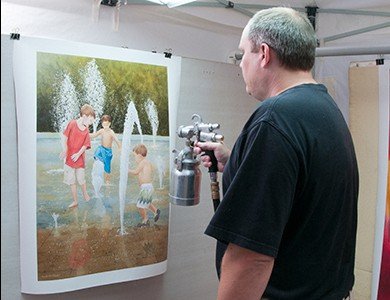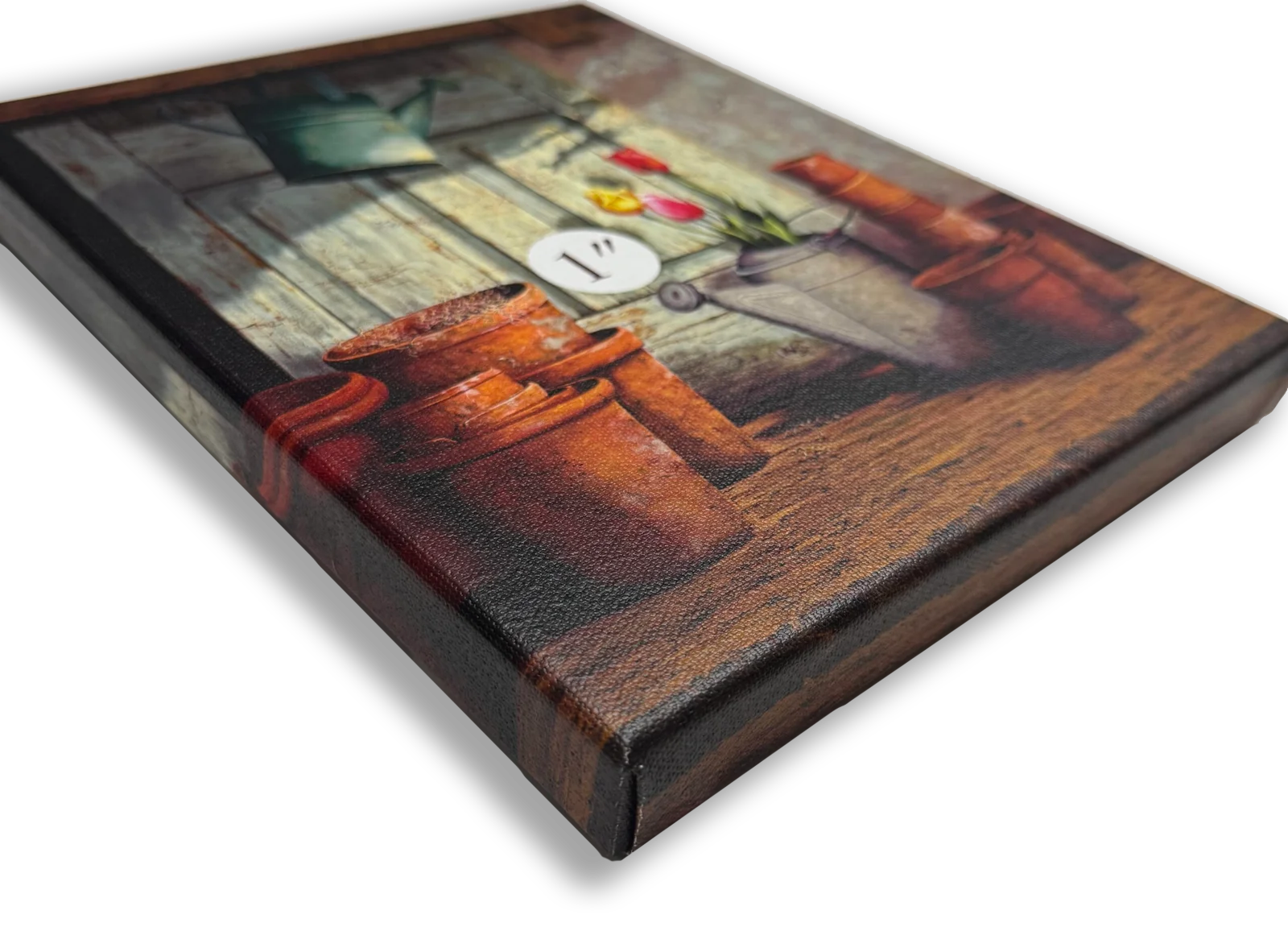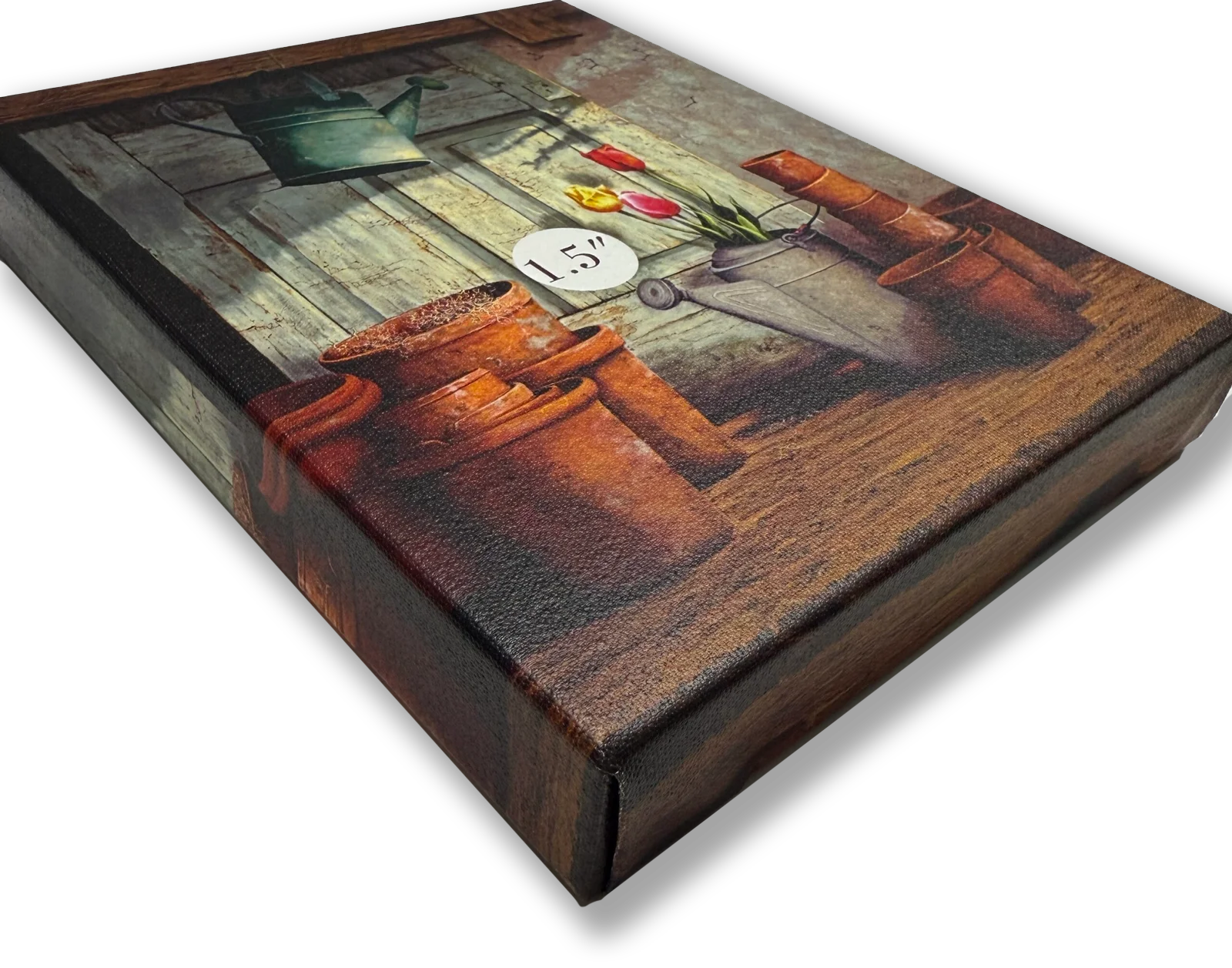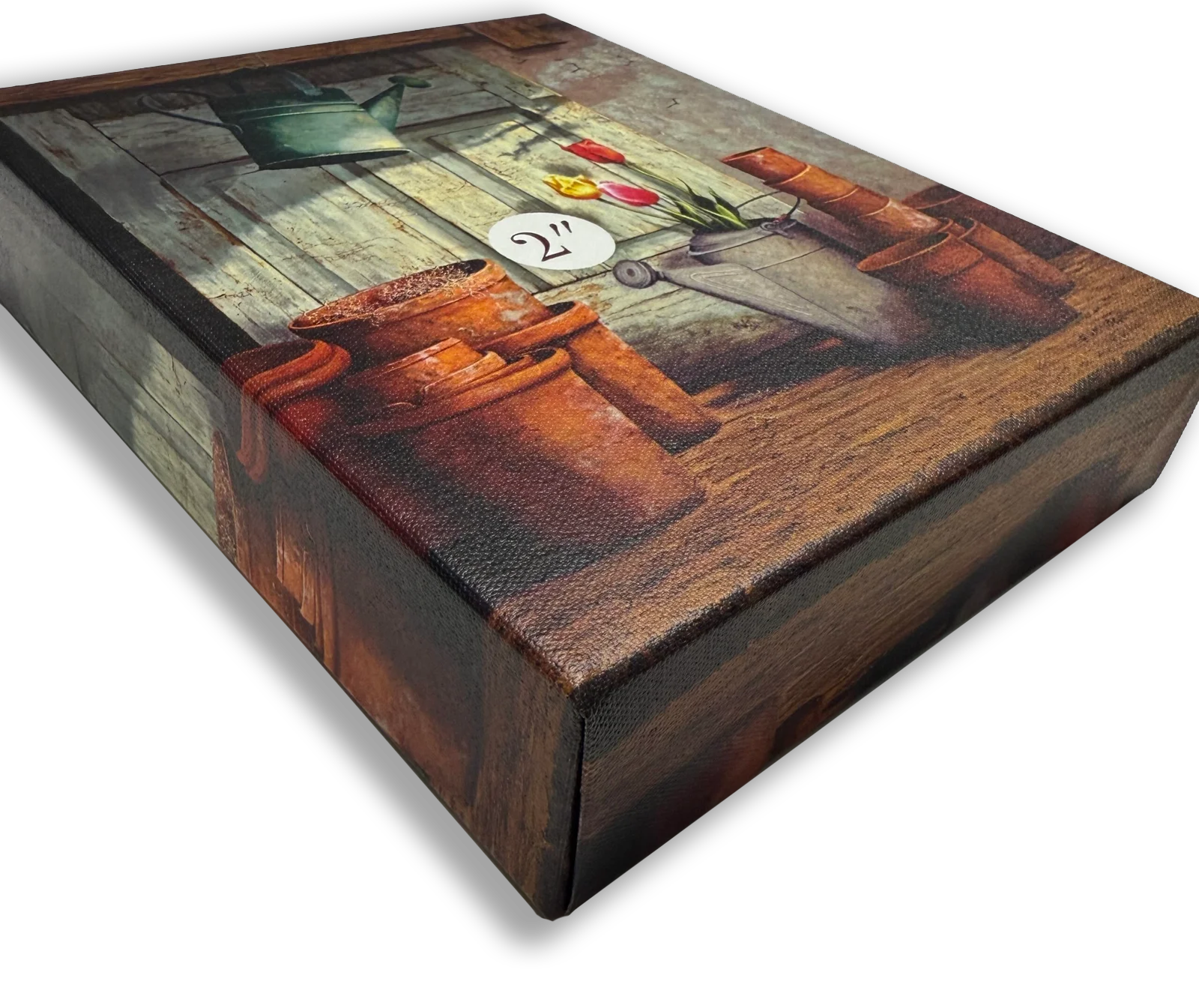Giclée Printing Services — Elevate Your Art with Museum-Quality Reproductions
For nearly 30 years, we’ve been proud to offer high-end giclée printing services to artists, photographers, and collectors. But what exactly is a giclée?
What is Giclée?
Giclée (pronounced zhee-clay) is a French word meaning “to spray,” referring to the precise inkjet process used in this form of fine art printing. Giclée printing involves spraying pigment-based inks onto premium substrates such as fine art paper or canvas. The result is a richly detailed, archival-quality reproduction that faithfully captures the color, texture, and depth of the original artwork.
A giclée is defined as a high-fidelity, museum-grade digital reproduction of a two-dimensional artwork—typically produced in a limited edition, with each print often numbered and signed by the artist.
Is Giclée Right for You?
If you’re an artist looking to extend the reach of your work while preserving the integrity of your originals, giclée prints are an ideal choice. Here’s why:
-
Exceptional Reproduction Quality:
Giclées are the closest possible match to the original artwork, offering stunning detail and tonal accuracy. -
Versatile Materials:
Choose from a wide range of archival papers with different textures and tones, or opt for canvas to match your artistic style. Prints can even be individually hand-embellished for added uniqueness. -
Flexible and Affordable Production:
Unlike traditional lithography, giclées require a minimal upfront investment—often under $100. Plus, you can print on demand, producing just a few prints at a time. -
Increased Artistic Freedom and Income:
-
Earn more from your work by selling both originals and high-quality reproductions.
-
Offer giclées as a more accessible option for collectors while maintaining higher value for your originals.
-
Preserve your original pieces and sell only limited edition prints if you choose.
-
Giclée printing empowers artists to share their vision more widely without compromising quality—offering creative control, financial flexibility, and long-lasting impact.
Ready to bring your art to life through giclée? We’re here to help.
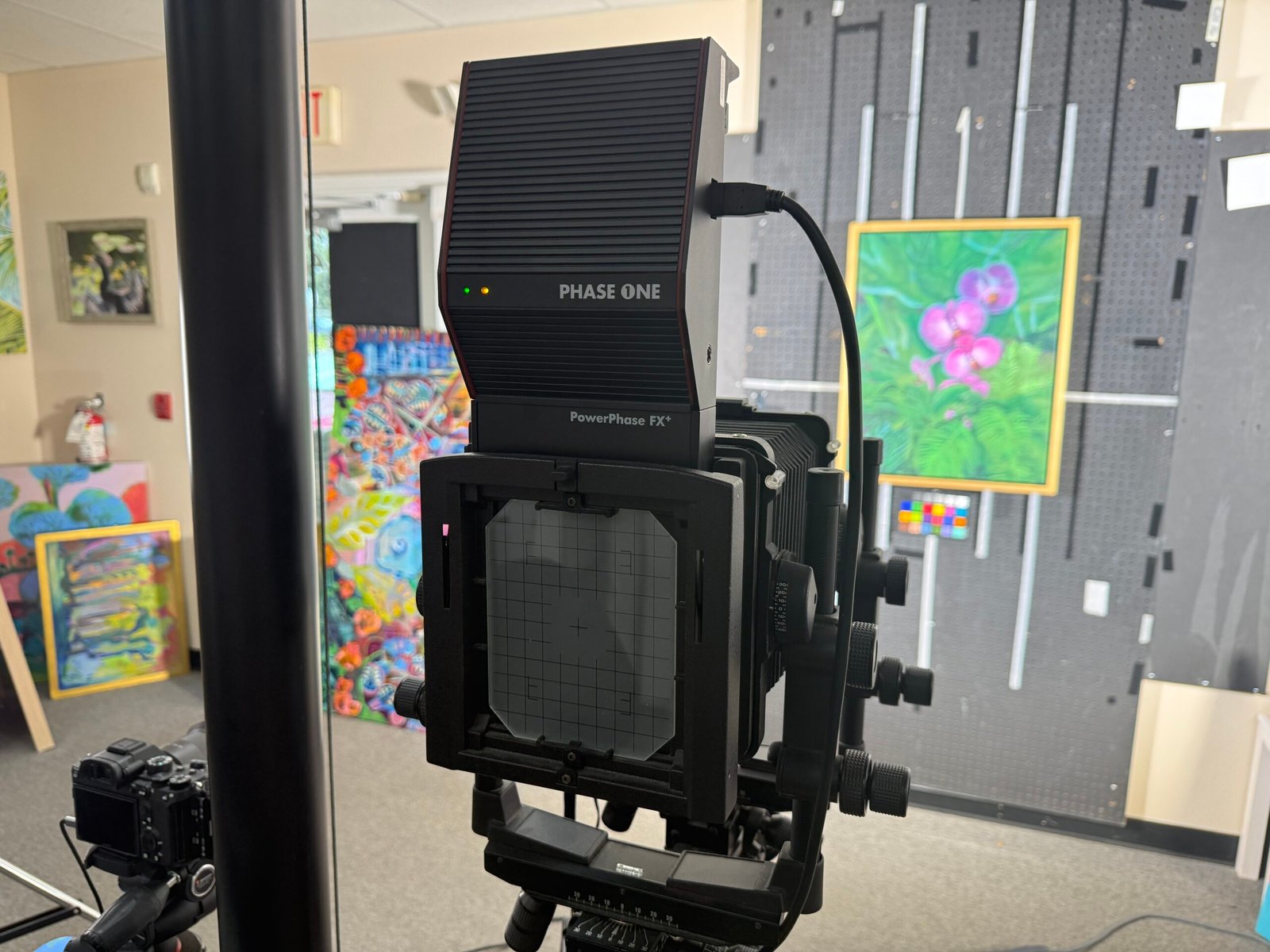
Image Capture
The first, and most important, step in the giclée process is to obtain a digital image of the artwork – starting out with a good, sharp, high resolution image is key to producing a quality giclée.
To capture art images digitally, We use a Sony mirrorless camera for smaller artworks and a Phase One PowerPhase FX+ “view-camera/scan-back” setup. This 132MP scan back uses the camera optics, but “scans” the image line-by-line, taking several minutes to complete the process producing a 328mp file. Lighting is as important as the camera in getting a perfect reproduction. We use the latest in digitally controlled professional LED video lights. This setup allows us to photograph your artwork even if it is in a frame or behind glass.
Image Editing and Proofing
After an art image has been successfully digitized, it must be “edited.” This process accomplishes the following:
-
Adjust the color, saturation and contrast of the image to closely match the original artwork. This is required because subtle variations occur as an image is captured, brought into an editing program, output to a printer and printed on one or more types of media.
-
We correct the colors and values digitally, by means of “adjustment layers “, which are over-imposed on the image. This means that the editing process is “non-destructive,” i.e., does not change the base image; therefore, we can always undo a change, reduce the intensity of a change, or simply return to a previous version of an image.
-
Adjustments can be made globally, to affect the entire image, or just to specific areas. Generally, the correct approach is to make global adjustments first, to bring the overall image as close as possible to the original, and then adjust specific areas. For instance, an image may have an overall colorcast; this would be adjusted first, and then specific elements of the image may be adjusted for color (hue), intensity (saturation) or value (contrast, darkness). Most reputable giclée firms will perform both types of adjustment, but some “economy” printers only do global adjustments, if at all.
-
The image editing process culminates with the printing of one or more “printer’s proofs” (approx. 8X11 or larger) for final approval by the artist. Additional “tweaking” of the image may take place, if desired. The artist then signs the final proof and we archive it, so that we can reference it in all future printings of that image. Image capture and proofing takes one week.
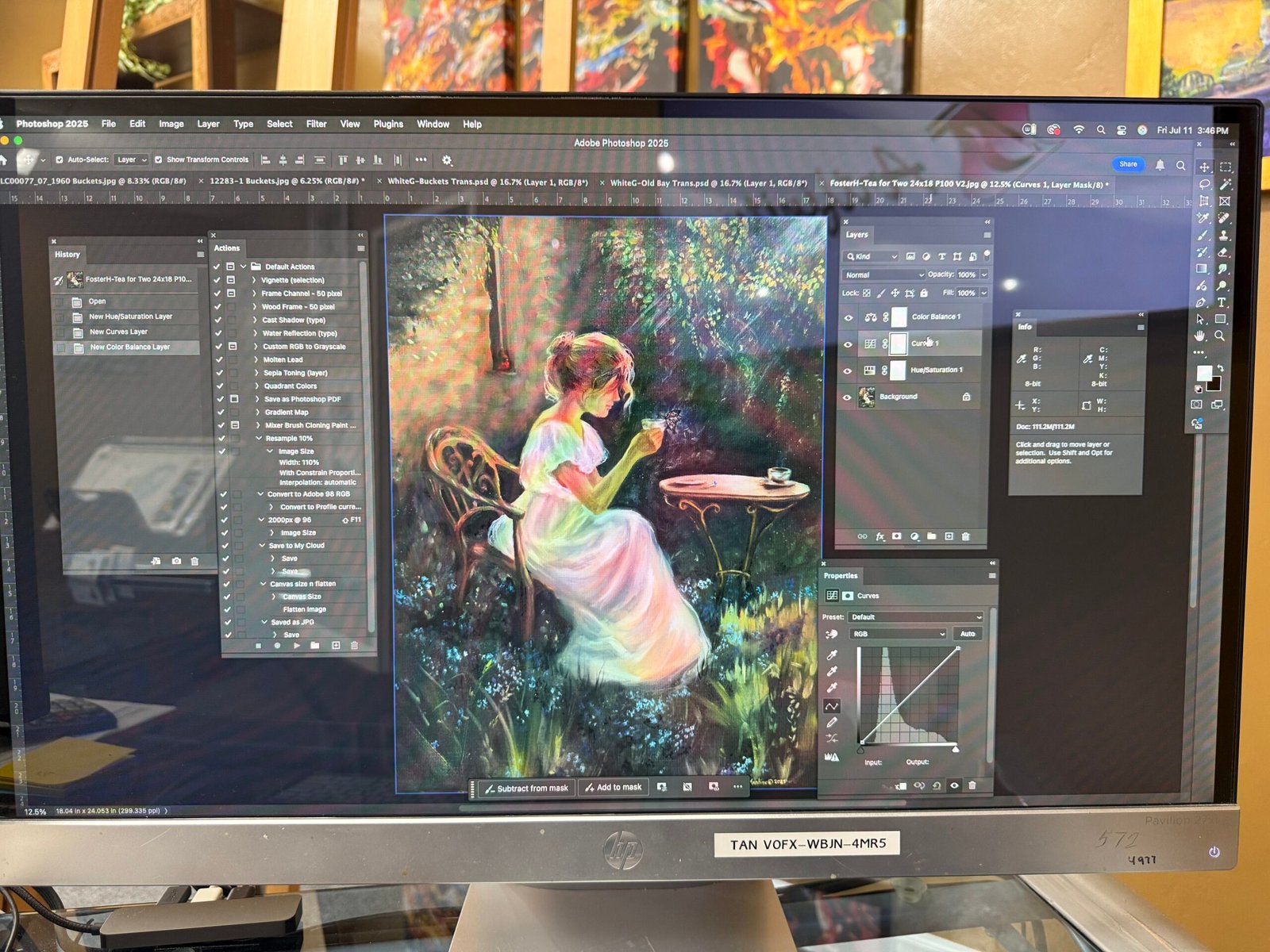
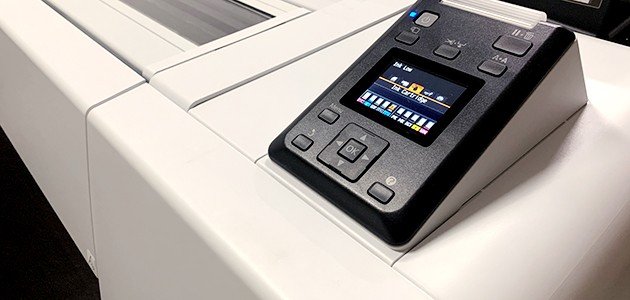
Printing
After proof approval, additional reproductions are created in the size(s) and quantities specified by the artist. Usually, artists do not print the entire edition at once, but rather order 2-10 prints at a time. This limits their initial cost and risk exposure, and it is one of the great advantages of giclées over lithography. The artist can easily order additional prints as needed.
Quality giclée printing strives to achieve two goals: 1) high-fidelity or faithfulness to the original artwork, and 2) archival prints that won’t fade, crack or change colors noticeably over a long period of time.
To achieve these goals, giclée printers must use the right combination of printer, printing software (“RIP”), print profile, media or “substrates,” inks and coatings. There are many manufactures and providers of these elements, and many combinations are possible. It is beyond our scope to review these, and the technology changes very quickly.
At the beginning of giclée technology most giclées were printed on Iris printers. Today we use 10-color Epson SC-P20000 & Epson SC-P10000 printers, which have outstanding print quality, a wide color gamut and excellent grayscale and neutral tones capabilities. They are also one of the few printers that handles media rolls up to 64 inches wide. To maintain quality and consistency we only use Epson archival-quality UltraChrome inks and pH neutral archival art media including Moab cotton rag papers, Anasazi heavy weight canvas, and Epson and Kodak photo papers. Paper prints take 2-3 days to complete and Canvas takes one week. Rush service available for an extra fee.
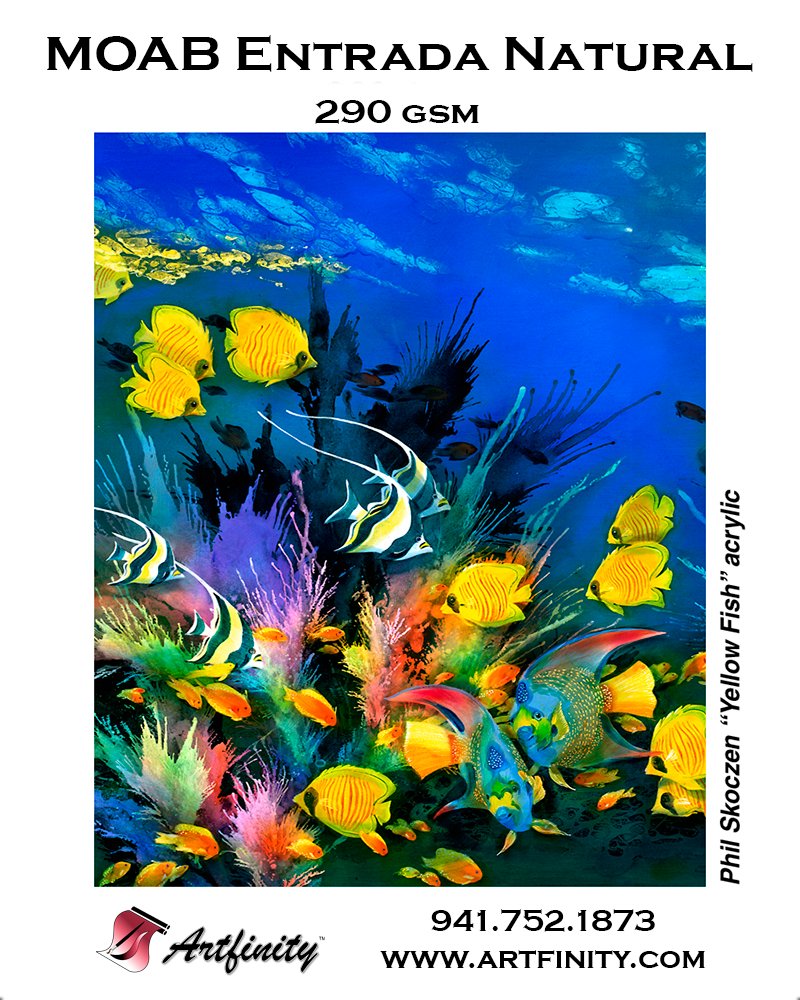
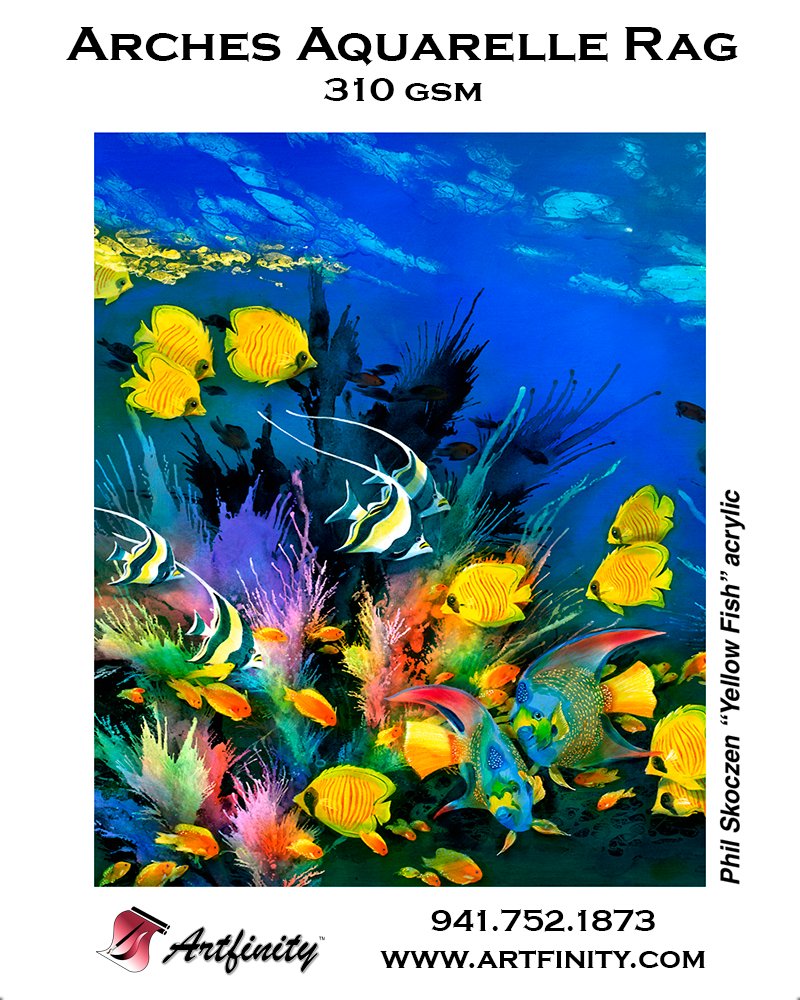

Finishing
Giclées printed on papers generally require no additional process after printing, beyond trimming and bagging. Canvas giclées, on the other hand, should be varnished, since most canvases are not framed behind glass. The varnish guards against accidental rubbing or abrasion and also helps seal out humidity. Finally, the varnish tends to give more “depth” to the image and makes the finish more closely resemble an original painting on canvas. Varnish can be applied by hand (with foam rollers), but generally better results are obtained with a spray gun, especially on larger pieces.
We use a high-volume, low-pressure (HVLP) spray system that provides a uniform mist of varnish. This set-up is generally superior to standard compressor tank systems because it provides a more consistent finish and results in less over-spray. The varnish we use is specifically designed for art canvases; it will stretch and bend around corners — even on gallery-wrapped canvas — without chipping or cracking and can easily be painted over if you emblish your prints.
We can also stretch canvases or you can elect to stretch your own.
